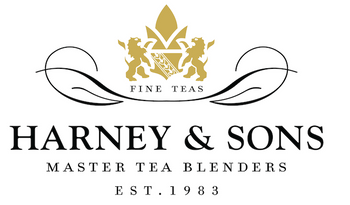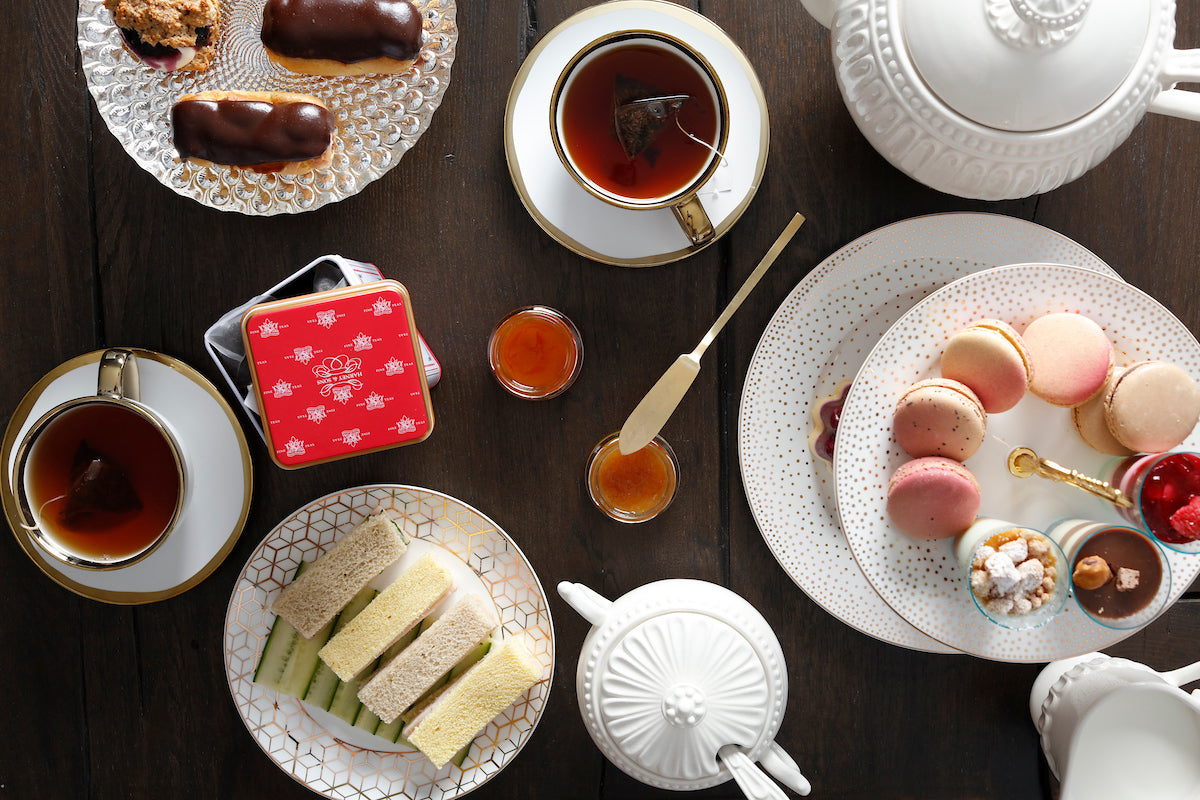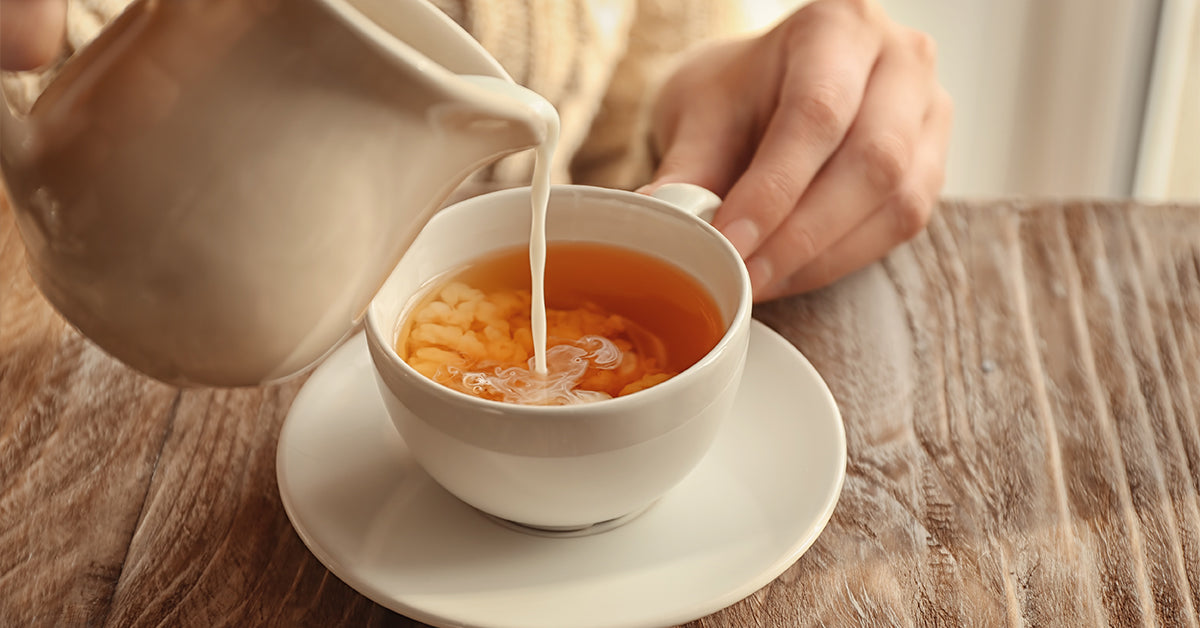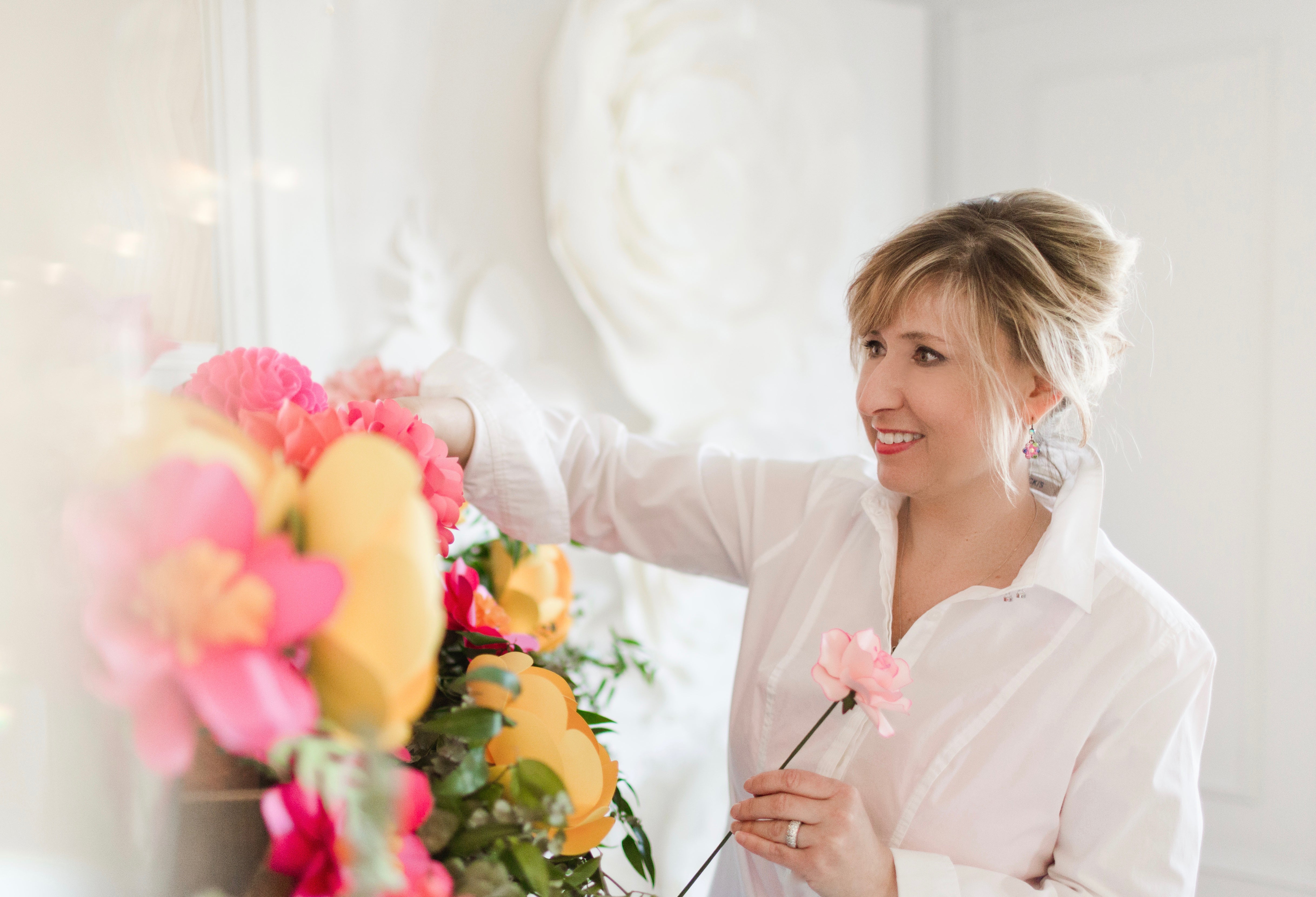With Downton Abbey back in the spotlight, we thought it was a good time to explore that most sacred of British things, tea. As the American-British author Henry James said, “There are few hours in life more agreeable than the hour dedicated to the ceremony known as afternoon tea.”
You don’t need an English mansion or servants to host or enjoy a proper “British tea.” But there are definitely necessary elements to be had and etiquette to be observed when holding a traditional British afternoon tea. Quite so!
Afternoon Tea v. High Tea
The first thing to know is the difference between these two types of British teas (and you may be surprised by what you learn).
Afternoon tea is the posh, high-falutin’ ceremony you envision when you think of doing tea like the Brits. The china cups, the little sandwiches, sweets and scones, the fancy hats and whispered gossip -- that’s afternoon tea.
High tea, while it sounds very posh, is actually a much more relaxed affair. High tea began amongst the English lower class, who didn’t have the luxury of stopping their workday for tea and little sandwiches. Instead, high tea came when they arrived home: it is a combination of tea and supper. The upper classes also took to the idea and have high tea when returning from riding to hounds and other strenuous activities. High tea menus are more savory, robust fare and include eggs, meat pies as well as cakes and bread and butter.
How did high tea get its seemingly misleading moniker, you ask? Curiously, it all has to do with the tables. Afternoon tea was also called “low tea,” because the tables the tea was served on tended to be lower, like a coffee table. High tea got its name because it was typically served at a dining table, which is higher. These days, Britons generally refer to their tea rituals simply as “having tea” rather than using the phrases “afternoon tea” or “high tea.”
Just remember when making your reservation for tea at 3:00 in the afternoon at the Ritz in London, don’t call it high tea. It’s a sure tea-rookie mistake.

Afternoon Tea: Steeped in History
This most British of rituals came about in the early 1840s. Anna Russell, the seventh Duchess of Bedford, noticed that she became hungry (or what she called “getting a sinking feeling”) around 4:00 in the afternoons. Dinner at that time was served around 8:00, so it’s understandable that the Duchess might have been feeling a teeny bit “hangry.” She asked that a tray of tea with bread and butter be brought to her room. This became a habit, and soon she began inviting friends to join her.
Before you could say, “I take mine with milk, please,” afternoon tea became a widespread, fashionable social event. During the 1880s, upper-class and society women would dress for the occasion, and this would continue for decades. Tea was generally served in the drawing room around 4:00.
Today, with the exception of special occasion teas, daily afternoon tea is observed with a cup or even a mug of tea (a no-no in a true afternoon tea ceremony) and a biscuit or small cake. Even if you are attending a more formal afternoon tea at a tea room, hotel or in a private home, you can leave the big hats, gowns and gloves at home, as well as the jeans and tees -- tasteful casual dress is the way to go.

Bring on the Tiny Sandwiches
Afternoon tea definitely has a prescribed set of elements and the order in which they are consumed. First up is the tea itself, which should be prepared in a pot with loose leaf tea. A true afternoon tea ceremony would not include the use of tea bags (no offense, tea bags!). The table is set with cups and saucers (no mugs allowed), a spoon to stir the tea, a knife to spread clotted cream and jam, and a napkin (preferably linen).
The tea is poured into an individual’s cup and handed to them, then the next cup is poured and so on. The milk and sugar are passed -- always put those ingredients into the cup after the tea has been poured, not first -- and before you start to enthusiastically stir, hang on. The stirring of the tea is to be done in an up and down pattern (think 12 and 6 on a clock) rather than in circles. Avoid clanking the spoon against the side of the cup, and don’t tap it on the top when you’ve finished stirring. A tea ceremony is a quiet, dignified event. If you’re looking for rowdy, find a nearby pub and a soccer match!

Next comes the food. The sandwiches/savory items are passed first. You can bypass the fork -- tea food is eaten with your fingers in small bites. Even the smallest cucumber sandwich should be eaten in two or three bites, not inhaled. These aren’t loaded nachos, folks. A little class is required.
Next come the sweets, like macarons or petit fours. Again, enjoy responsibly. The final round is the warm scones. Never slice the scones with a knife, simply break them in half. Use the knife to spread the clotted cream (which sounds like something that came from a rancid cow but is actually crazy good) and the jam. If you go for the Devonshire way, it’s clotted cream first, then jam. If you’re a fan of the Cornwall (Cornish) method, ‘tis the other way ‘round.
Having a second cup of tea is a good idea, but a third is generally considered one too many. When finished, lay your re-folded napkin on the table and wonder how you managed to live this long without having tea at 4:00 every day.
If you want to simplify your British tea ceremony, you can serve Cream Tea which isn’t tea with cream at all (we know: high tea isn’t high tea, cream tea isn’t cream tea and shrimp aren’t jumbo). Cream Tea is simply tea served with jams, clotted cream and scones; no little sandwiches and sweets. You can enjoy a delicious Cream Tea at either our Millerton or Soho cafés. If you want to inject some bubbly into your tea ceremony, Royal Tea includes Champagne or sparkling wine.
Keep Your Pinky Down!
If you go to one of the British tea rooms or make a reservation at one of London’s finest hotels for afternoon tea, sipping it with your pinky extended will make you stand out like a sore thumb. Save that for tea parties with stuffed animals (they don’t judge).
Couple other rules:
- Hold your teacup by the handle, don’t wrap your hands around it.
- Never blow on the tea. If it seems too hot, let it sit while you take three bites out of a one-inch sandwich.
- No phone, please, or other personal items on the table.
- Sip, don’t slurp!
- When in doubt just ask yourself, “WWTQD?” (What would the Queen do?)
Fancy a Cuppa?
Inspired to host your own traditional British afternoon tea party? Step one is to start with a great black tea, like Earl Grey Supreme, Victorian London Fog, Darjeeling or whatever you fancy -- it’s your party! If you don’t typically brew loose leaf tea, you’ll need to get yourself a pot like our Curve Teapot that comes with its own infuser, or something to give your party real old-world flair like our Historic Royal Teapot. Cheerio!





17 comments
Sharon
I recently read that adding milk to tea was done in Europe in the 17th century, added to the cup first, to protect the delicate, thin porcelain from cracking when the hot tea was poured into it. It’s also thought that they added milk to help with the taste, as the tea then wasn’t of the best quality, and had survived long sea voyages under less than ideal storage circumstances.
Milk has been added to tea in Tibet (yak butter) and India (chai) for over a thousand years. Great Britain didn’t start drinking tea seriously until the 18th century as initially it was too expensive for anyone except the very wealthy. They added milk for the same reason as the Europeans.
Nowadays it’s at the preference of the person as to whether it goes in first, or after the tea is poured, or even used at all. We have access to much higher quality teas, and mugs don’t crack.
I recently read that adding milk to tea was done in Europe in the 17th century, added to the cup first, to protect the delicate, thin porcelain from cracking when the hot tea was poured into it. It’s also thought that they added milk to help with the taste, as the tea then wasn’t of the best quality, and had survived long sea voyages under less than ideal storage circumstances.
Milk has been added to tea in Tibet (yak butter) and India (chai) for over a thousand years. Great Britain didn’t start drinking tea seriously until the 18th century as initially it was too expensive for anyone except the very wealthy. They added milk for the same reason as the Europeans.
Nowadays it’s at the preference of the person as to whether it goes in first, or after the tea is poured, or even used at all. We have access to much higher quality teas, and mugs don’t crack.
Gabriel
The brits are not too fond of iced tea. Thai tea from a good Thai restaurant is heavenly. They are missing out on exotic iced teas. That’s on them. = )
The brits are not too fond of iced tea. Thai tea from a good Thai restaurant is heavenly. They are missing out on exotic iced teas. That’s on them. = )
A David Woodward
Your article was very interesting. I’ve never been a coffee drinker. Coffee never set well with my sensitive gullet. I’ve retired now to Florida but I lived in Alaska for 34 years and spent a good deal of time working out of wall tents on salmon streams. Strong black tea (Sri Lanka or Ceylon) and honey was my mainstay then and still is. So… my question: How do you think Robert Service would have had his tea? How would you appropriately serve tea to a “Remittance Man”? I start and end each day with a strong mug of tea. Likely not acceptable in polite British society. But then my ancestors were all “Second Sons” so expectations would probably not be too high anyway! Dave
Your article was very interesting. I’ve never been a coffee drinker. Coffee never set well with my sensitive gullet. I’ve retired now to Florida but I lived in Alaska for 34 years and spent a good deal of time working out of wall tents on salmon streams. Strong black tea (Sri Lanka or Ceylon) and honey was my mainstay then and still is. So… my question: How do you think Robert Service would have had his tea? How would you appropriately serve tea to a “Remittance Man”? I start and end each day with a strong mug of tea. Likely not acceptable in polite British society. But then my ancestors were all “Second Sons” so expectations would probably not be too high anyway! Dave
Kathy
The best article!! Fun, funny and easy to understand for any beginner, and educational! Thanks for sharing! I truly enjoyed it!
The best article!! Fun, funny and easy to understand for any beginner, and educational! Thanks for sharing! I truly enjoyed it!
Katie D
This was an absolute joy to read with many chuckles throughout. I love the ritual and ceremony of tea and learned a lot from this article. I’m saving it as I have big dreams to open my own Tea Room here in Gettysburg, PA some day soon. I just visited the café in Millerton and was like a little kid in a candy store and even got to meet some Harneys! Love your products. Again, thank you for such a fun and informative article!
This was an absolute joy to read with many chuckles throughout. I love the ritual and ceremony of tea and learned a lot from this article. I’m saving it as I have big dreams to open my own Tea Room here in Gettysburg, PA some day soon. I just visited the café in Millerton and was like a little kid in a candy store and even got to meet some Harneys! Love your products. Again, thank you for such a fun and informative article!
Angela Renals
Emeric, I love your writing! Happy to stumble on this article a little late (better than never), and agree that a bit of decorum without the stuffiness is just right for a proper afternoon tea. Happy tea travels, Angela, Destination Tea
Emeric, I love your writing! Happy to stumble on this article a little late (better than never), and agree that a bit of decorum without the stuffiness is just right for a proper afternoon tea. Happy tea travels, Angela, Destination Tea
Beverly Hannon
I worked at IBM in downtown London (Wigmore St.?) back in 1961. A tea cart was wheeled around about 10 and again about 3. One could also buy small cold sandwiches and sweets. No coffee to be found. I loved it.
I worked at IBM in downtown London (Wigmore St.?) back in 1961. A tea cart was wheeled around about 10 and again about 3. One could also buy small cold sandwiches and sweets. No coffee to be found. I loved it.
Fran Bianchi
This is a great article on British tea traditions, thank you for explaining Afternoon Tea and High Tea. Makes me want to have a tea party. Forwarding to my tea totaling gal pals.
This is a great article on British tea traditions, thank you for explaining Afternoon Tea and High Tea. Makes me want to have a tea party. Forwarding to my tea totaling gal pals.
Christina
Very informative reading. Thanks so much. Now I just need to learn how to brew a proper pot. Is it one spoonful per cup plus one for the pot?
Very informative reading. Thanks so much. Now I just need to learn how to brew a proper pot. Is it one spoonful per cup plus one for the pot?
Myriam
Our family love to sit and enjoy a late afternoon cup of tea of course with some sweets, we recently tried 1000 miles aroma oolong and love it that said When are you going to bring macaroons to the pantry, they are the perfect tea companion for that tea.
Our family love to sit and enjoy a late afternoon cup of tea of course with some sweets, we recently tried 1000 miles aroma oolong and love it that said When are you going to bring macaroons to the pantry, they are the perfect tea companion for that tea.
Karen Crane
Love the American humor used to explain British tea customs! I’ll just keep in mind “WWTQD?” Currently I’m really enjoying Elaine’s Special Blend – my mother-in-law’s name, incidentally. Sadly, she’s a staunch coffee-drinker and I have yet to convert her, despite the intriguing aspect of having a tea that shares her name. Yet hope springs eternal …
Love the American humor used to explain British tea customs! I’ll just keep in mind “WWTQD?” Currently I’m really enjoying Elaine’s Special Blend – my mother-in-law’s name, incidentally. Sadly, she’s a staunch coffee-drinker and I have yet to convert her, despite the intriguing aspect of having a tea that shares her name. Yet hope springs eternal …
Lisa
I am constantly explaining the difference between High Tea and Afternoon Tea. Now I can just direct them to your website (which I do anyway) to read about the difference! Thanks for the blog.
I am constantly explaining the difference between High Tea and Afternoon Tea. Now I can just direct them to your website (which I do anyway) to read about the difference! Thanks for the blog.
Karen Roberton
At last an American who understands what High Tea is! As a Brit it makes me laugh when I see High Tea, the place obviously has no idea what they are saying. You also have the menu correct. One does not partake of salad, soup at tea, unless it is High Tea. But most Tea places serve with soup/salad. I am not sure who is teaching them but it is NOT English in any shape or form. Thank you for helping me educate people.BTW love your teas. Your tisanes are amazing, the best flavour. I am trying Tian Tai Yellow in this recent order. Thank you. I love visiting Twinings in London on the Strand wish you also had a shop I could visit and explore.
At last an American who understands what High Tea is! As a Brit it makes me laugh when I see High Tea, the place obviously has no idea what they are saying. You also have the menu correct. One does not partake of salad, soup at tea, unless it is High Tea. But most Tea places serve with soup/salad. I am not sure who is teaching them but it is NOT English in any shape or form. Thank you for helping me educate people.BTW love your teas. Your tisanes are amazing, the best flavour. I am trying Tian Tai Yellow in this recent order. Thank you. I love visiting Twinings in London on the Strand wish you also had a shop I could visit and explore.
Jacqueline
Thank you for writing such an enjoyable article! I think I might have to make taking tea a daily ritual.
Thank you for writing such an enjoyable article! I think I might have to make taking tea a daily ritual.
BK McCloud
Emeric, thanks for this fantastic review of afternoon tea, high tea and etiquette. I have recommended it to my students.
We enjoyed wonderful cups of SoHo in class yesterday.
BK
Emeric, thanks for this fantastic review of afternoon tea, high tea and etiquette. I have recommended it to my students.
We enjoyed wonderful cups of SoHo in class yesterday.
BK
Kathy S.
This is a wonderful way to spend a relaxing, stress free, time with family and friends. I still have my Mother’s china teacups and ones that my husband has bought for me. It is an eclectic collection but means so much to me. And I enjoy serving tea using H & S tea every time. Thank you for clarifying the difference between Afternoon and High Tea.
This is a wonderful way to spend a relaxing, stress free, time with family and friends. I still have my Mother’s china teacups and ones that my husband has bought for me. It is an eclectic collection but means so much to me. And I enjoy serving tea using H & S tea every time. Thank you for clarifying the difference between Afternoon and High Tea.
Greta Sharp
This is so fabulous. It makes me long for rainy London afternoons. Thank you!
This is so fabulous. It makes me long for rainy London afternoons. Thank you!